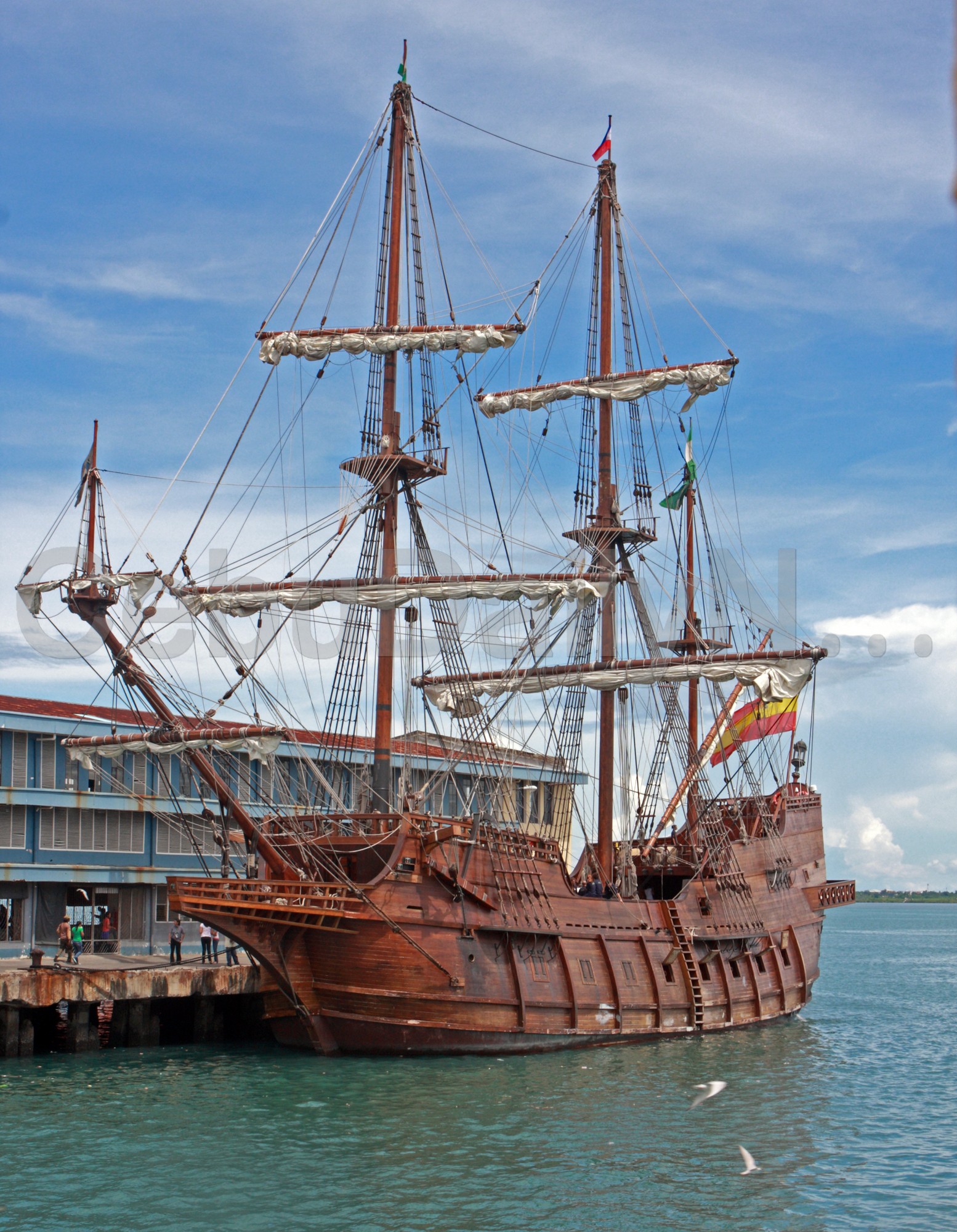Galleon Ships

Caribbean Tales- Ships - GalleonThe Galleon was the ship of the line for itsday. However it served the dual purpose of being both a Man-O-War and alsoa treasure/merchant ship. In the Golden age of Piracy, Spain had the mostfortified Galleons in the water.
A noticeable design of the galleon was thatits hull sloped inward as it rose, tapering to a narrow top deck comparedwith the ship's beam at the water line. The purpose for this design was toconcentrate the weight of its cannons close to the centerline of the shipin an attempt to improve stability. The galleon was heavily armed. It typicallycarried 74 guns, with 36 each of these being mounted on either side of theship. Dungreed trainer. The two remaining guns were mounted aft.
This does not include the numerousswing guns mounted along the rail that were used to repel borders.Despite arranging the galleons ordinance along the centerline of the ship,the ship was easily rocked by the sea. A galleon had extremely high side andan even higher stern (or Poop) deck. A galleon also had a very short keelwhen compared to the length of the hull. This design caused the Galleon topitch and roll more easily than other ships. In short, if you were prone tosea sickness, you didn't want to be on a Galleon.With that said, The Galleon was an extremely sleek ship and faster than manyof her predecessors. They ran about 30-50 m long, 8 m wide, standing upto15 m out of the water, carrying from 600 to 2000 tonnes of cargo. They hadtwo to three decks.
Most galleons were four masted ships, although some wereonly three, forward masts being square-rigged, lateen-sails on the mizzenmast,and a small square sail on her high-rising bowsprit. The stern most mastwas known as the bon-adventure mast and was rigged with a lanteen sails whichgave the ship great maneuverability especially in the wind. For their size,Galleons had great speed (about eight knots).The treasure ships as a rule, would move in convoy or flotas typically withthe strongest ships hauling the most treasure. The flotas would shun contactwith other ships and would invariable run rather than fight. Of course thespeed of eight knots was fast for ship the size of a galleon but it was slowcompared to Sloops. In the event that a Galleon couldn't outrun a foe it hadseveral tricks up its sleeves.The formidable firepower of its broadsides easily outmatched almost any othership on the sea. It was foolhardy to exchange broadsides with a Spanish galleon.If a ship actually got in close enough to attempt boarding a galleon, thegalleon had razor sharp crescent blades attached to the outer most edges ofits masts.
Galleons History. The galleon was an ocean going ship type which evolved from the carrack in. Light Galleon. These small workhorses ply the waters in service of the Royal Navy. Medium Galleon. The medium galleon has the best broadside firepower and cargo space at this size.
The blades would rip an adversaries sails to ribbons. Galleonshad fighting platforms built half way up the mainmast and foremast. When anenemy ship attempted to board a galleon, archers from these platforms wouldrelease a shower of arrows and crossbow bolts into the attackers.
(Firearmswere forbidden from the fighting tops for fear of sparks from the weaponssetting the sails on fire).A typical crew would consist of around 200 men.The Galleon could also carry as many as 40 paying passengers.Occasionally you will hear Galleons called 'Galleys'.This is a misnomer.
- воскресенье 19 апреля
- 81